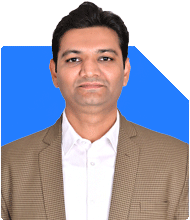I want to invest 15000 per month. Suggest funds from large cap, large and mid cap, small cap, midcap, flexi cap and multi cap fund
Ans: Let's dive into the details of investing Rs 15,000 per month across different mutual fund categories. This strategy will help diversify your portfolio, maximize returns, and manage risks effectively.
Understanding Mutual Funds
Mutual funds pool money from many investors to invest in stocks, bonds, and other securities. They offer professional management and diversification. This means that your money is spread across various investments, reducing risk. Mutual funds also offer liquidity, allowing you to buy and sell units easily.
Importance of Diversification
Diversification is key in investing. By spreading your money across various funds, you reduce the risk of loss. Different fund categories perform differently under various market conditions. Diversification helps in balancing the risk and return of your portfolio.
Categories of Mutual Funds
Let's explore the different categories of mutual funds you can consider for your Rs 15,000 monthly investment.
Large Cap Funds
Large cap funds invest in well-established companies with a large market capitalization. These companies are often leaders in their industry and have a stable performance history. Investing in large cap funds offers stability and moderate growth. They are less volatile compared to mid cap or small cap funds.
Large and Mid Cap Funds
These funds invest in both large cap and mid cap companies. This blend provides a balance between stability and growth potential. Large and mid cap funds benefit from the stability of large companies and the growth potential of mid-sized companies.
Mid Cap Funds
Mid cap funds invest in medium-sized companies. These companies have significant growth potential but are more volatile than large cap companies. Investing in mid cap funds can offer higher returns, but with higher risk. They are suitable for investors with a moderate to high-risk appetite.
Small Cap Funds
Small cap funds invest in small-sized companies. These companies have the highest growth potential but also the highest risk. Small cap funds are suitable for aggressive investors willing to take higher risks for potentially higher returns. These funds can provide substantial long-term gains.
Flexi Cap Funds
Flexi cap funds invest in companies of all sizes without any market cap restrictions. This gives fund managers the flexibility to invest in the best opportunities across the market. Flexi cap funds offer diversification and the potential for higher returns by taking advantage of opportunities across different market caps.
Multi Cap Funds
Multi cap funds invest in large cap, mid cap, and small cap companies. This diversification across various market caps reduces risk and increases potential returns. Multi cap funds are suitable for investors looking for a balanced approach with exposure to all market segments.
Benefits of Actively Managed Funds
Actively managed funds have professional fund managers who actively buy and sell securities to outperform the market. These funds can potentially offer higher returns than index funds, which passively track a market index. Active fund managers use their expertise to identify investment opportunities and manage risks effectively.
Disadvantages of Index Funds
Index funds aim to replicate the performance of a market index. They have lower fees but often provide average returns. They do not actively seek opportunities for higher returns. Index funds also do not protect against market downturns as they cannot adjust their holdings.
Disadvantages of Direct Funds
Direct funds are mutual funds bought directly from the fund house without any intermediary. They have lower expense ratios but lack professional advice. Investing through a Certified Financial Planner (CFP) provides personalized advice, portfolio management, and financial planning, ensuring your investments align with your goals.
Investment Strategy
Here’s a strategy for investing Rs 15,000 per month across different mutual fund categories:
Large Cap Funds: Rs 4,000
Investing Rs 4,000 in large cap funds provides stability and moderate growth. These funds are suitable for conservative investors looking for steady returns.
Large and Mid Cap Funds: Rs 3,000
Allocating Rs 3,000 to large and mid cap funds balances stability and growth. This blend captures the benefits of both large and mid-sized companies.
Mid Cap Funds: Rs 2,500
Investing Rs 2,500 in mid cap funds offers higher growth potential. These funds are suitable for investors with a moderate risk tolerance looking for higher returns.
Small Cap Funds: Rs 2,000
Allocating Rs 2,000 to small cap funds provides exposure to high growth potential. These funds are for aggressive investors willing to take on more risk.
Flexi Cap Funds: Rs 1,500
Investing Rs 1,500 in flexi cap funds offers diversification and flexibility. These funds can adapt to market conditions and take advantage of opportunities across market caps.
Multi Cap Funds: Rs 2,000
Allocating Rs 2,000 to multi cap funds ensures exposure to all market segments. These funds provide a balanced approach with potential for good returns and reduced risk.
Advantages of Mutual Funds
Mutual funds offer several advantages:
Professional Management: Experienced fund managers handle your investments.
Diversification: Spread risk across various securities.
Liquidity: Easy to buy and sell units.
Systematic Investment Plan (SIP): Invest regularly with discipline.
Compounding: Reinvested earnings generate more earnings over time.
Tax Benefits: Certain funds offer tax deductions under Section 80C.
Risks of Mutual Funds
Investing in mutual funds also comes with risks:
Market Risk: Value of investments can fluctuate with market conditions.
Credit Risk: Risk of default by issuers of debt securities.
Interest Rate Risk: Changes in interest rates can affect debt fund returns.
Liquidity Risk: Difficulty in selling securities at desired prices.
Power of Compounding
Compounding is the process where earnings generate more earnings. By reinvesting your earnings, you can grow your investment exponentially over time. The longer you invest, the more significant the impact of compounding. Starting early and investing regularly amplifies the benefits of compounding.
Your decision to invest Rs 15,000 monthly shows a commitment to securing your financial future. Diversifying across various mutual fund categories is a wise strategy. It balances risk and return while taking advantage of market opportunities. Remember, investing is a long-term journey. Stay patient and disciplined for the best results.
It's commendable that you are proactively managing your finances. Your dedication to investing regularly is a significant step towards achieving your financial goals. By diversifying your investments, you are making informed decisions that will benefit you in the long run.
Final Insights
Investing Rs 15,000 per month across different mutual fund categories is a smart move. It balances stability, growth, and diversification. Consider large cap, large and mid cap, mid cap, small cap, flexi cap, and multi cap funds for a well-rounded portfolio. Remember, actively managed funds offer the potential for higher returns compared to index funds. Direct funds may have lower fees, but professional advice from a Certified Financial Planner is invaluable. Keep investing regularly and leverage the power of compounding to grow your wealth. Your disciplined approach and informed decisions will pave the way for a secure financial future.
Best Regards,
K. Ramalingam, MBA, CFP,
Chief Financial Planner,
www.holisticinvestment.in

























